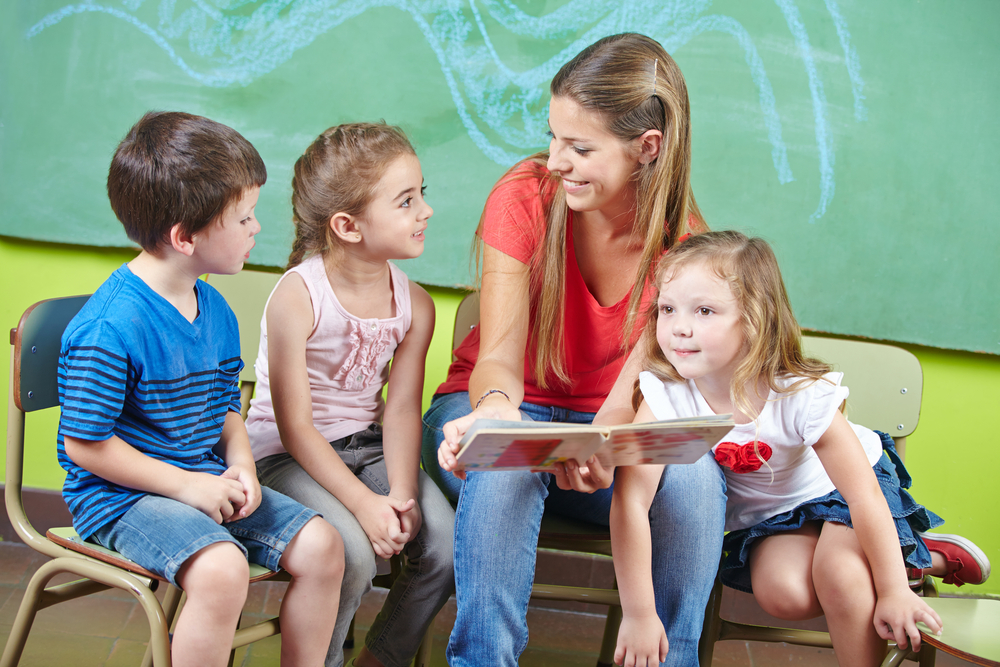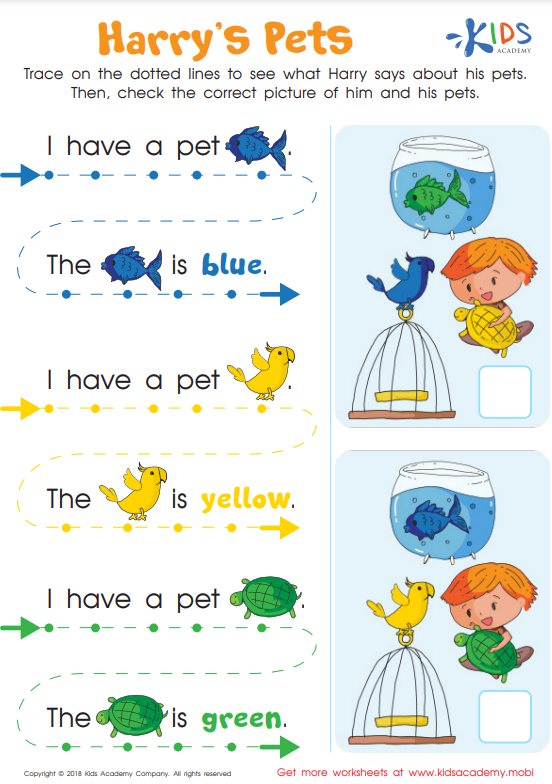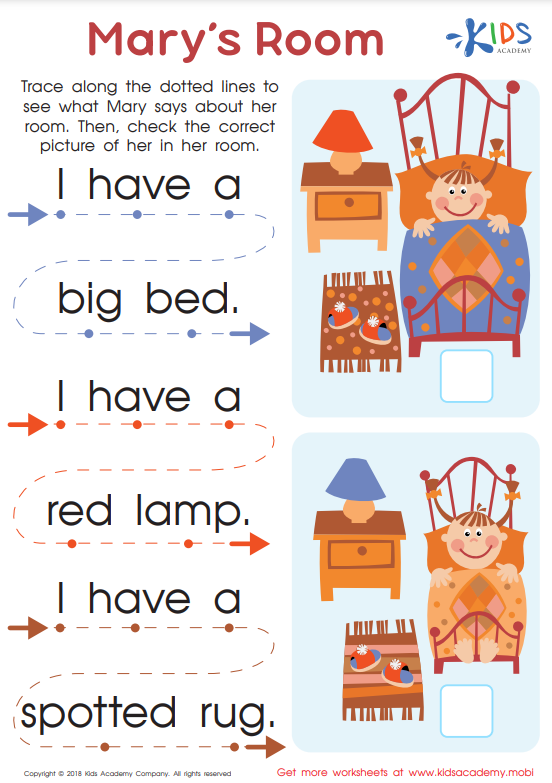-
English
-
English Pre-K
-
Unit 1: Early Literacy Skills
-
ABCs
- Pre-writing Activities
- Letter A
- Letter B
- Letter C
- Letter D
- Letter E
- Letter F
- Letter G
- Letter H
- Letter I
- Letter J
- Letter K
- Letter L
- Letter M
- Letter N
- Letter O
- Letter P
- Letter Q
- Letter R
- Letter S
- Letter T
- Letter U
- Letter V
- Letter W
- Letter X
- Letter Y
- Letter Z
-
Phonological Awareness
- Rhyming Words
- Letter Sounds B, C, D, and F
- Letter Sounds G, H, J, and K
- Letter Sounds L, M, N, and P
- Letter Sounds Q, R, S, and T
- Letter Sounds V, W, X, Y, and Z
- Letter Sounds A, E, and I
- Letter Sounds O and U
- Beginning Sounds
- Matching Letters to Sounds
-
ABCs
-
Unit 2: Vocabulary
-
Common Words
- Sorting Words into Categories
- Color Words
- Verbs and Adjectives
-
Sight Words
- Sight Words 'I' and 'Can'
- Sight Words 'You' and 'Like'
-
Common Words
-
Unit 3: Print Awareness
-
Parts of a Book
- Working with a Book
- Spaces Between Words
- Text and Illustrations
-
Picture Books and Poems
- Picture Book Text Features
- Poem Text Features
- Signs and Labels in the Community
-
Parts of a Book
-
Unit 4: Reading Literature
- Questions About Stories
- Discussing Stories
-
Unit 5: Reading Informational Texts
- Retelling Details in a Text
- Questions About a Text
- Connections Between Events
- Text Features
- Describing Illustrations
-
Unit 1: Early Literacy Skills
-
English Pre-K
-
Math
-
Math for Pre-Kindergarten
-
Logic and Geometry
-
Matching and Sorting
- Same and Different
- Which One Is a Little Different?
- Objects That Go Together
- Sorting by Color and Size
- Sorting The Same Group in Different Ways
- Patterns
-
Shapes
- Shapes in Our Environment
- Naming Shapes Regardless of Size
- Making Shapes in Preschool
- Comparing Shapes
- Relative Positions
- Sorting Shapes
-
Matching and Sorting
-
Early Number Sense
-
Numbers 1–5
- Counting to 3
- Counting to 5
- Arranging Objects up to 3 Objects
- Arranging up to 5 Objects
- Writing Numbers 1–5
-
Numbers 1–5
-
Numbers up to 10
- Counting to 10
- Arranging up to 10 Objects
- Number 0
- Writing Numbers 6–10
- Breaking Down Numbers 6-10
-
Logic and Geometry
-
Math for Pre-Kindergarten
Text and Illustrations
“Can you please show me the pictures?” Teachers and parents across the globe can relate to hearing this plea as they share picture books with young readers. The illustrations in books are arguably just as important as the text. As your child begins building print awareness, she will undoubtedly value the relationship between the illustrations and the text.

Relationship Between the Text and Illustrations
Understanding the logical connections between text and illustrations is a milestone skill for Pre-K students. Vivid visual elements aid in your child’s perception and memory skills. Take facial expressions for example. Your child can use his knowledge about emotions and facial expressions to infer how a character feels about story events.
This implicit thinking is sophisticated and will lead to stronger inferential thinking skills going forward. Highlight how information from the illustrations is not always included in the text.
Activities to Support Your Child
Picture Walk
A picture walk is commonly used before reading strategy to make predictions and set the purpose for reading. At the start of each new picture book, read the title of the book and show the cover. Give your child a few minutes to browse the book, attending to the illustrations only. After looking at the illustrations, have your child predict the storyline. Confirm and adjust predictions as you progress through the book.
Guess and Check
Use small sticky notes to cover a word or two on each page of a picture book. Tell your child that you’re going to play a game called guess and check. When your child encounters a word that is covered, they will have to rely on the clues from the illustration to guess the hidden word.
Cover and Reveal
This activity is like guess and check. Cover the entire text on a page. Have your child analyze that illustration to gather as much information as possible about the setting, characters, and story events. Ask your child, “What is happening in the text?” Uncover the text and compare it to your child’s observations.
Kids Academy’s resources featured below provide extra support by using illustrations to support understanding of texts.
Next Steps
Visit your local library or bookstore to hunt for picture books to read aloud to your toddler. Use the features to reinforce print awareness and develop inferential thinking. Don’t forget to take advantage of the research-based resources offered through Kids Academy.




